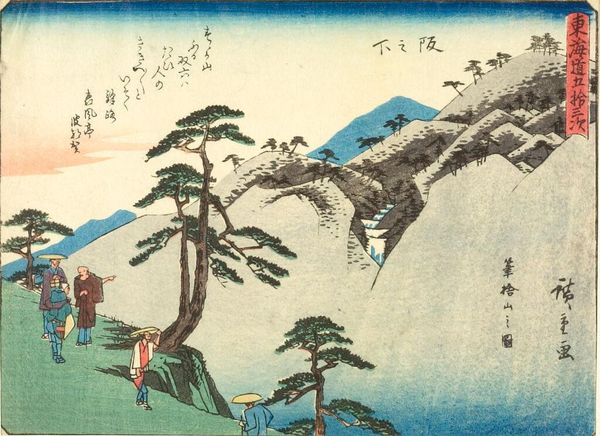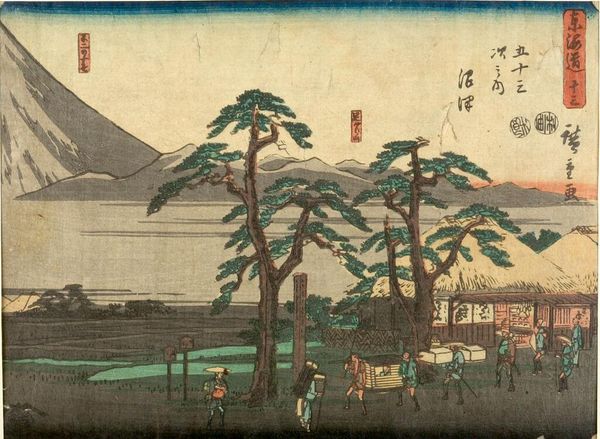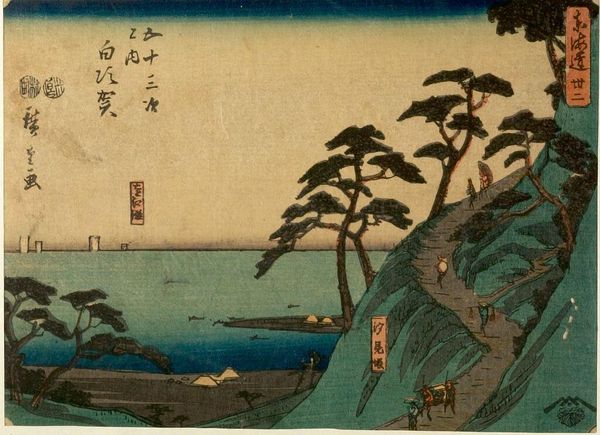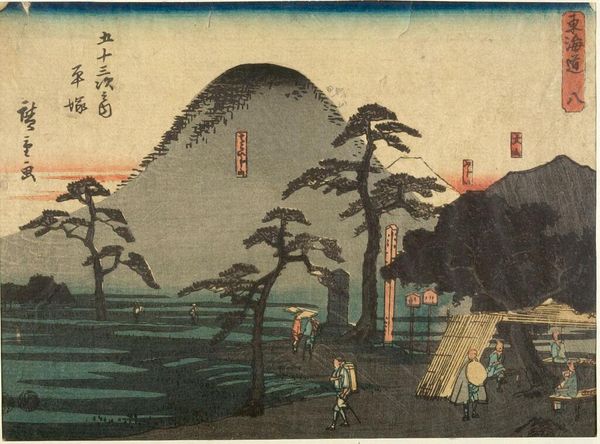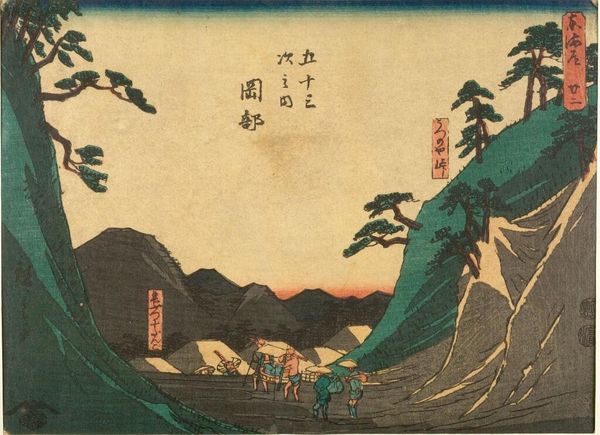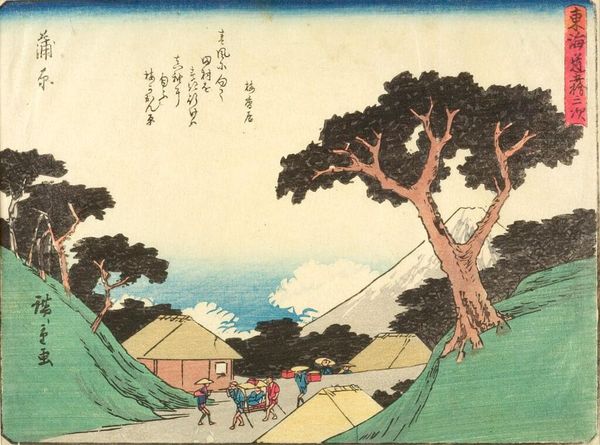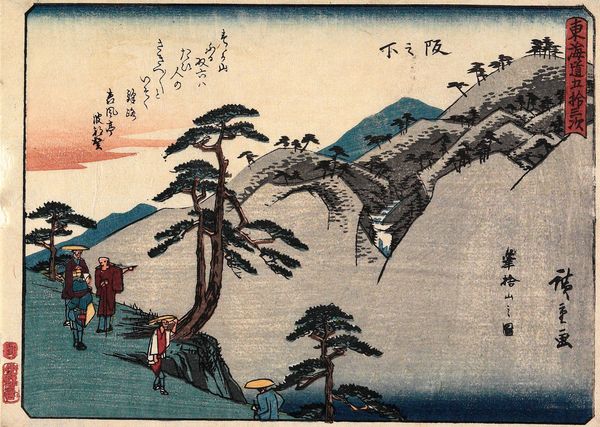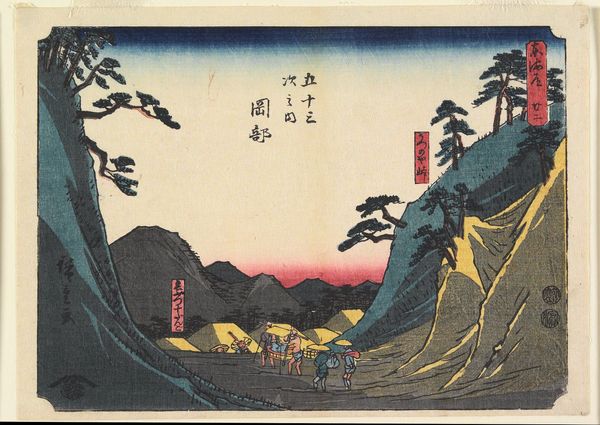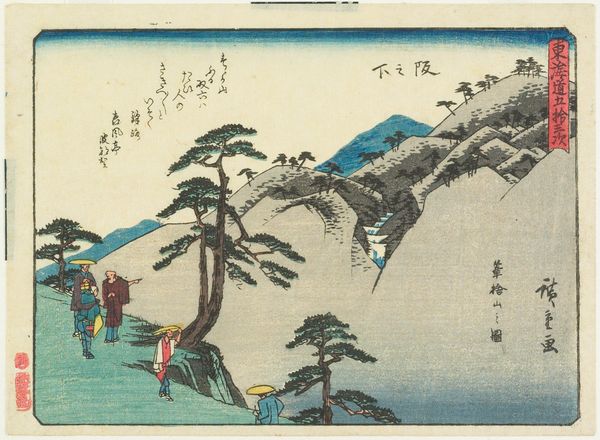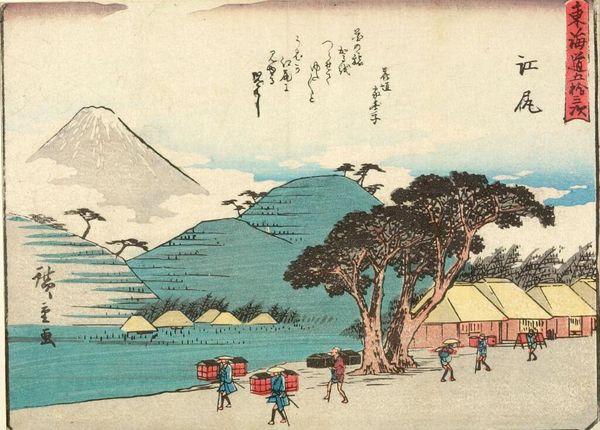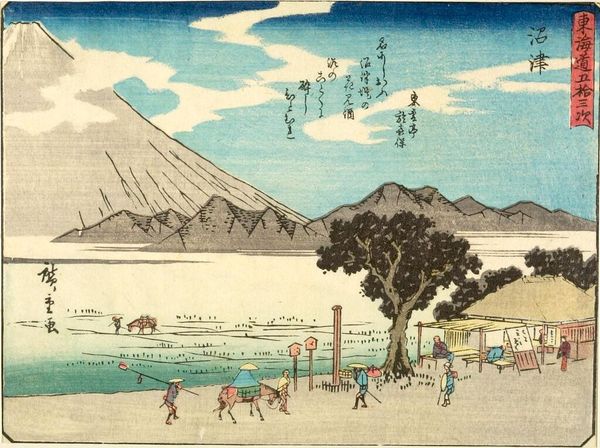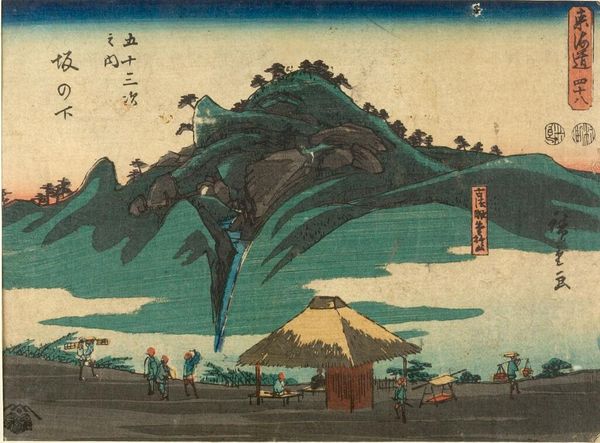
No. 25, Nissaka: Mount Mugen, the Night-crying Stone, and Sayo Mountain Pass (Mugenzan, Yonaki-ishi, Sayo-no-nakayama), from the series The TÅkaidÅ Road, The Fifty-three Stations (TÅkaidÅ, GojÅ«san tsugi no uchi) c. 1850 - 1851
0:00
0:00
Copyright: CC0 1.0
Curator: This work, by Utagawa Hiroshige, captures "No. 25, Nissaka: Mount Mugen, the Night-crying Stone, and Sayo Mountain Pass," from his series *The Fifty-three Stations of the Tōkaidō Road*. The tonality strikes me as rather somber. Editor: Yes, the composition hinges on the tension between the bold, almost graphic, forms of the trees and the distant, muted mountains. The figures are placed carefully to guide the eye, yet their presence feels secondary to the landscape itself. Curator: The "night-crying stone" is rather prominent, isn't it? Stones and rocks often carry symbolic weight in Japanese folklore, representing permanence, the spirits of the departed, or even a connection to the divine. Editor: True, but visually, it also serves as an anchor, a dark mass that balances the lighter sky and draws the eye downward through the scene. Its shape and placement are crucial to the overall structure. Curator: It reminds me of the poignant legend associated with this location, where a woman and her child were murdered, with her spirit said to reside in this very stone. Editor: Precisely, and Hiroshige uses these visual cues to subtly evoke that underlying narrative, making the viewer an active participant in constructing meaning from the image. Curator: The artist’s use of color certainly enhances the melancholy of the piece. Thank you for your insights. Editor: My pleasure. The interplay of form and symbol offers layers of interpretation, truly enriching the viewing experience.
Comments
No comments
Be the first to comment and join the conversation on the ultimate creative platform.
